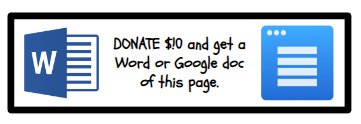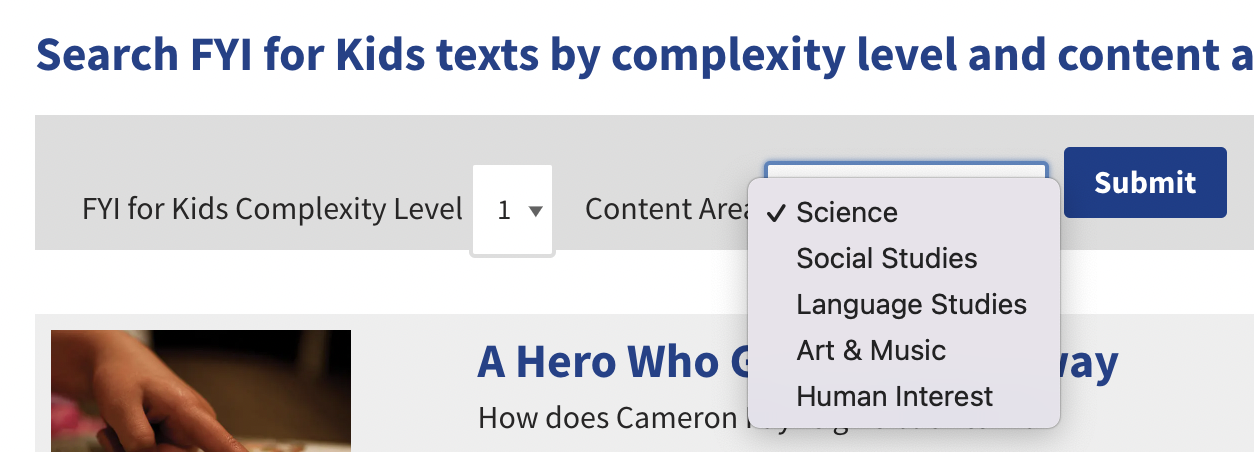

Close reading and test-taking go hand in hand. Close reading has become a popular approach in teaching comprehension of complex texts. With close reading, all students can answer text-based related questions, not just students with prior background knowledge.
Students tackle complex texts through repeated reading, annotation, answering questions, and analyzing when close reading.
Close reading is not only essential for test-taking; close reading is a life skill!
How to “Close Read” a Complex Text
Teachers, choose your complex texts on my nonfiction passages page.
Here is a great resource – FYI for Kids – and use these corresponding lessons for each article: Comprehension Response Sheets by Pat Cunningham. There are also generic comprehension guides: Comprehension Guides. FYI for Kids is GREAT, because you can pick your complexity level from 1 to 5 and the content you want! LOOK:
Google “Close Reading videos” to see close reading in action!
Get the above placemat FREE here:
CLOSE Read Placemat by Beryl Bailey | Teachers Pay Teachers
Close Reading ~ “One of the most talked-about shifts in the Common Core State Standards (CCSS) is the need to engage students in ‘close reading’ of complex texts. Essentially close reading means reading to uncover layers of meaning that lead to deep comprehension. To do this, you often need to read a text several times to analyze it and gain a deeper understanding of the text” (quote from the UNE course).
An excellent description of close reading can be found on the Scholastic site. It states:
“The first time you dig your shovel in (read), you scrape the surface off the ground. The second time you dig in (reread the text), you get a little more dirt (meaning). And every time you dig in (read) after that, your hole gets bigger and bigger until it’s just right and you get the full meaning” (quote from the UNE Assessment course).
Create a table that looks like this:
| Task ~ Pre-Reading |
|
| First Reading ~ Key Ideas and Details |
|
| Second Reading ~ Craft and Structure |
|
| Third Reading ~ Integration of Knowledge and Ideas |
|

When close reading, especially when taking a test, read each test selection 3x.

TELL STUDENTS: When answering multiple-choice questions ~ match keywords in the question or answer choices to the actual words in the text. Locate and label! Never assume you have the correct answer. Some answer choices are true to the story but do not answer the question! Get in the habit of numbering in the story where you found your answer.

Test-taking ~ open response writing
Use the following color system to formulate your response. This includes your opening and closing sentences, transition words, quotes/evidence, and inferences/supporting statements. This can be very boring and formulaic, but it is a good start for beginning writers.
TIP: The multiple-choice questions and answers can help students answer the open responses! Reuse/rephrase those when writing!
Open response formula
Turn the question into your opening sentence.
First, p. ___ says, copy a sentence from the story and “put in quotes.” Explain the quote. This is inferring! Maybe write: This shows that______. It is important because _________.
Next, p. __ says, copy a sentence from the story and “put in quotes.” Explain the quote. This is inferring! Maybe write: This shows that______. It is important because _________.
Finally, p. __ says, copy a sentence from the story and “put in quotes.” Explain the quote. This is inferring! Maybe write: This shows that______. It is important because _________.
Turn the question into a clincher sentence.

TELL STUDENTS:
Visualize the above-colored formula to plan your open response.
Pay attention to what the question is asking! Do not just summarize the text. Include direct quotes from the text and your interpretation and words. This is inferring! You can even refer to paragraph or page numbers. “p. 6 says that…”
Fill the whole space, giving more than enough information!
Write neatly, watching spelling and sentence structure. If the writing is sloppy and sparse, test correctors assume it is a poor piece and grade from there!

Sample open response
Here is a sample open response using the color system from MA DOE MCAS 2013 Grade 4 selection, “You Rock!” The question is, “What can rock climbers learn from practicing in indoor gyms?”
Rock climbers can learn a lot from practicing in indoor gyms. First, p. 5 says, “Rock climbing gives you courage and self-confidence.” This shows that in indoor gyms, you can learn courage and self-confidence. Rock climbing is dangerous. You need the safety of practicing in an indoor gym before doing it in the real world. Second, p. 6 says, “The fake rocks at an indoor gym have crevices where fingers and toes can grasp and fit. Colored tape and dots show various routes.” It is important to try different challenges in the gym because you can practice seeing if you can handle more challenging routes in the real world. In the real world, not all rocks have crevices for toes and fingers. You also won’t have someone next to you telling you what to do either, so it is good to practice in a gym. Finally, p. 10 talks about the need to trust your belayer. Rock climbing is a partner activity, and you need to learn to trust the people you are with when you climb for real. Practicing in an indoor gym is beneficial for building climbing skills.

Test Terms to Learn for MCAS Test
MCAS Study Guide ~ The MCAS often has questions about the terms on this attachment.

For More Information on Close Reading and Test-Taking
Designing Close Reading Questions

Complex Texts
Teachers should be sure to teach using complex texts. Texts are complex based on quantitative measures (Lexile level), and qualitative measures:
- MEANING ~ layers of meaning, theme, purpose
- STRUCTURE ~ text features, genre organization
- LANGUAGE ~ vocabulary, sentence length, style, figurative language, dialects
- KNOWLEDGE ~ content and disciplinary knowledge, prior knowledge
and reader and task ~ what does the teacher need to do to help students access it?
Look for online videos about grappling with complex texts!
Copyright 05/04/2012
Edited on 04/28/2023
Copyscape alerts me to duplicate content. Please respect my work.

![]()



